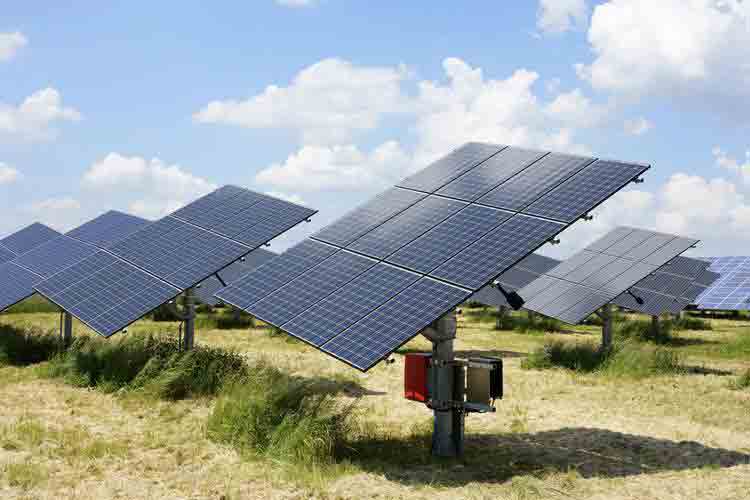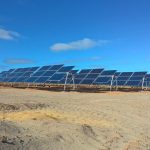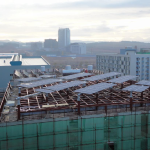Key Considerations for Installing Solar Trackers
As the demand for renewable energy continues to soar,solar power has emerged as a frontrunner,with solar trackers playing a pivotal role in maximizing energy generation.These innovative devices,also known as solar tracking brackets,dynamically adjust the orientation of solar panels to follow the sun’s path,significantly boosting efficiency.However,installing a solar tracker is not a one-size-fits-all process.Several critical factors must be carefully considered to ensure optimal performance,longevity,and return on investment.
Site Assessment and Planning
1.Solar Resource Evaluation
Before installing a solar tracker,a thorough assessment of the site’s solar resource is essential.This involves measuring the amount of sunlight the location receives throughout the year,including factors like average daily sunlight hours,seasonal variations,and shading from nearby structures or trees.Sites with higher solar irradiance and minimal shading will benefit the most from solar tracking technology.
2.Land and Terrain Conditions
The terrain of the installation site is another crucial factor.Solar trackers require a relatively flat and stable surface to operate efficiently.Uneven ground or slopes can affect the stability and accuracy of the tracking system.Additionally,the soil conditions must be suitable to support the weight and movement of the tracker.Conducting a geotechnical survey can help identify any potential issues and recommend appropriate foundation solutions.
3.Space Requirements
Solar trackers typically require more space than fixed solar panels due to their movement and potential for shading adjacent panels.Single-axis trackers,for example,need sufficient clearance to avoid shading each other during their east-west movement.Dual-axis trackers,which adjust in multiple directions,may require even more space.Proper layout planning is essential to maximize energy generation while minimizing land use.
Choosing the Right Solar Tracker
1.Type of Tracker
There are two main types of solar trackers:single-axis and dual-axis.Single-axis trackers pivot around one axis,usually from east to west,and are suitable for sites with consistent sunlight throughout the day.Dual-axis trackers,which adjust both horizontally and vertically,offer greater flexibility and can capture more sunlight in regions with variable sun angles,such as higher latitudes.The choice between these two types depends on the specific site conditions and energy generation goals.
2.Durability and Reliability
Solar trackers are complex mechanical systems with moving parts,which means they require a high level of durability and reliability.Look for trackers made from high-quality materials that can withstand harsh weather conditions,such as extreme temperatures,wind,and precipitation.Additionally,consider the warranty and maintenance requirements of the tracker.A reliable tracking system with a strong warranty can save significant costs in the long run.
3.Compatibility with Existing Systems
If you are integrating a solar tracker into an existing solar power plant,ensure that the tracker is compatible with your current solar panels and electrical infrastructure.Some trackers may require specific types of panels or additional hardware to function optimally.Consulting with a solar expert or the tracker manufacturer can help identify any potential compatibility issues.
Installation Process
1.Professional Installation
Installing a solar tracker is a complex task that requires specialized knowledge and skills.It is highly recommended to hire a professional installer with experience in solar tracking systems.A professional installer will ensure that the tracker is correctly installed,aligned,and calibrated to maximize energy generation.They will also handle the necessary permits and inspections required by local authorities.
2.Foundation and Anchoring
The foundation of a solar tracker is critical for its stability and longevity.Depending on the site conditions,the foundation may involve concrete footings,ground anchors,or other stabilization methods.Proper anchoring ensures that the tracker remains stable during high winds and other adverse weather conditions.The installation team should follow the manufacturer’s guidelines and local building codes to ensure a secure foundation.
3.Wiring and Electrical Connections
Solar trackers require careful wiring and electrical connections to ensure safe and efficient operation.This includes connecting the solar panels to the tracker’s motor and control system,as well as integrating the system with the existing electrical infrastructure.Proper grounding and protection against electrical surges are essential to protect the tracker and other equipment from damage.
Maintenance and Monitoring
1.Regular Maintenance
To keep a solar tracker operating at peak efficiency,regular maintenance is crucial.This includes inspecting and lubricating moving parts,checking for wear and tear,and ensuring that all components are functioning correctly.A well-maintained tracker will have fewer breakdowns and a longer lifespan,maximizing the return on investment.
2.Monitoring Systems
Installing a monitoring system allows you to track the performance of your solar tracker in real-time.This can help identify any issues early on and ensure that the tracker is operating as intended.Modern monitoring systems can provide detailed data on energy generation,tracker position,and system health,making it easier to optimize performance and troubleshoot problems.
Installing a solar tracker can significantly enhance the efficiency and output of a solar power system.However,careful planning,site assessment,and consideration of the tracker’s type,durability,and compatibility are essential for a successful installation.Professional installation,proper maintenance,and real-time monitoring are also key to maximizing the benefits of solar tracking technology.By taking these factors into account,you can ensure that your solar tracker operates efficiently and reliably,contributing to a more sustainable and energy-efficient future.







